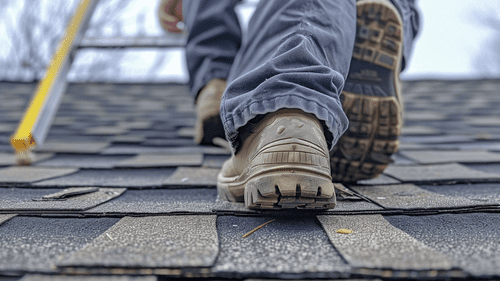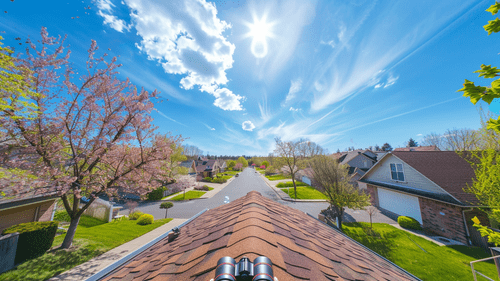When extreme weather strikes, your roof is often the first line of defense. But how well is it prepared to withstand the elements? High winds, hail, and relentless UV exposure can wreak havoc on your roofing system. Understanding these vulnerabilities is crucial for taking proactive measures to protect your home. Have you ever wondered how to spot early signs of weather-induced damage or which materials offer the best resistance?
In this guide, we’ll explore practical strategies to storm-proof your roof, ensuring it stands strong against severe weather. We’ll cover everything from identifying common indicators of damage to selecting the most durable materials for your climate. Plus, you’ll learn about essential maintenance practices and emergency preparedness tips that can save you time and money. Ready to get peace of mind and safeguard your home? We’ve got you covered.
Identifying Signs of Weather-Induced Roof Damage
Common Indicators of Roof Damage
Severe weather can leave a trail of destruction on your roof, often manifesting in subtle yet significant ways. One of the most common indicators of weather-induced damage is the lifting and displacement of shingles. High winds can pry shingles loose, creating gaps that expose the underlying structure to further damage. This issue is particularly prevalent in areas prone to hurricanes and tornadoes, where wind speeds can reach devastating levels.
Cracks and brittleness in shingle roofs are another telltale sign of damage. Prolonged exposure to extreme heat and UV rays can cause shingles to dry out and become brittle, making them more susceptible to cracking. This is especially common in regions experiencing hotter summers due to climate change. Additionally, metal roofs are not immune to weather-induced damage. Increased moisture can lead to mold growth and corrosion, compromising the roof’s integrity and lifespan.
Impact of Different Weather Conditions
Different weather conditions bring unique challenges to roofing systems. High winds can cause immediate and visible damage such as missing shingles and broken tiles. Hail storms can create dents and punctures in roofing materials, leading to leaks and structural weaknesses. Hurricanes combine the destructive forces of wind and rain, often resulting in extensive damage that requires immediate attention.
Extreme heat and UV exposure can also have a profound impact on roofing materials. Prolonged exposure to the sun can cause shingles to warp and deteriorate, reducing their effectiveness in protecting your home. UV rays can break down the chemical bonds in roofing materials, leading to premature aging and failure. Understanding these vulnerabilities is crucial for homeowners looking to take proactive measures to protect their roofs.
Choosing the Right Materials for Weather-Resistant Roofing
Top Hurricane Resistant Roofing Options
Selecting the right materials is a critical step in storm-proofing your roof. For regions prone to hurricanes, aluminum and copper metal roofs are excellent choices. These materials are not only durable but also resistant to corrosion and high winds. Aluminum roofs, in particular, are lightweight yet strong, making them ideal for areas with frequent storms.
Clay roof tiles are another robust option for hurricane-prone areas. These tiles are heavy and can withstand high winds without being easily displaced. GAF AS II shingles and Malarkey shingles are also noteworthy for their resilience. GAF AS II shingles are designed to resist impact and wind damage, while Malarkey shingles offer enhanced flexibility and strength, making them less likely to crack under pressure.
Material Selection Based on Climate
Choosing the right roofing material also depends on the specific climate of your region. For hot and humid areas, materials that can withstand high temperatures and moisture are essential. Metal roofs, for example, are excellent for hot climates as they reflect sunlight and reduce heat absorption. However, they must be treated to prevent rust and corrosion in humid conditions.
In storm-prone regions, durability and longevity are key considerations. Asphalt shingles, while common, may not offer the same level of protection as metal or clay tiles. Evaluating the durability and longevity of different roofing materials can help homeowners make informed decisions that ensure their roofs can withstand the elements for years to come.
Proactive Measures to Reinforce Your Roof
Regular Maintenance and Inspections
Routine maintenance and inspections are fundamental to extending the life of your roof and ensuring it remains storm-proof. Regular inspections can identify potential issues before they become major problems. For instance, spotting a loose shingle early can prevent water from seeping in and causing extensive damage.
Offering free detailed roof inspections is a service that emphasizes the importance of proactive care. During these inspections, professionals can assess the condition of your roof, identify weak spots, and recommend necessary repairs. This proactive approach not only saves money in the long run but also provides peace of mind knowing that your roof is in optimal condition.
Installation of Protective Features
In addition to regular maintenance, installing protective features can significantly enhance your roof’s resilience. Waterproof tarps are a simple yet effective temporary fix for leaks and minor damage. These tarps can be quickly deployed to cover damaged areas, preventing further water intrusion until permanent repairs can be made.
Long-term solutions include storm shutters and reinforced roofing structures. Storm shutters protect windows and doors from flying debris, while reinforced roofing structures provide additional support to withstand high winds and heavy rain. Investing in these protective features can make a substantial difference in how well your roof performs during extreme weather events.
Emergency Preparedness and Quick Repairs
Immediate Actions Post-Storm
When a storm hits, immediate action is crucial to minimize damage. Covering leaks with waterproof tarps is one of the first steps homeowners should take. Ensuring the tarp’s edges are securely fastened can prevent additional water from entering the home, buying time until professional repairs can be conducted.
Securing the tarp’s edges can be done using various methods, such as:
- Using heavy objects to weigh down the edges.
- Nailing or stapling the tarp to the roof.
- Using adhesive strips designed for outdoor use.
These methods ensure that the tarp remains in place, providing a temporary but effective barrier against the elements.
Professional Repair Services
Fast and professional services are essential when it comes to repairing storm-damaged roofs. Homeowners should look for roofing contractors who offer prompt response times and detailed estimates. A detailed estimate for most homes within 24 hours ensures that repairs can be planned and executed without unnecessary delays.
Choosing a reputable contractor involves considering factors such as experience, customer reviews, and the range of services offered. Ensuring timely repairs not only restores the roof’s integrity but also prevents further damage to the home’s interior. By prioritizing professional and efficient repair services, homeowners can quickly recover from the aftermath of severe weather events.
Conclusion: Ensuring Your Roof’s Resilience
Understanding your roof’s vulnerabilities to extreme weather is the first step in fortifying your home. From identifying early signs of damage like lifted shingles and cracks to choosing the right materials for your climate, proactive measures are key. Regular maintenance and inspections, combined with the installation of protective features, can significantly enhance your roof’s durability. When storms strike, immediate actions like securing leaks with waterproof tarps and seeking professional repairs ensure your roof remains a reliable shield against the elements.
By investing in resilient materials and staying vigilant with upkeep, you can safeguard your home from severe weather’s wrath. Remember, your roof is your home’s first line of defense—keeping it in top shape provides peace of mind. As you ponder the strategies discussed, consider this: How prepared is your roof for the next storm? Taking steps now could mean the difference between weathering the storm and facing costly repairs.







